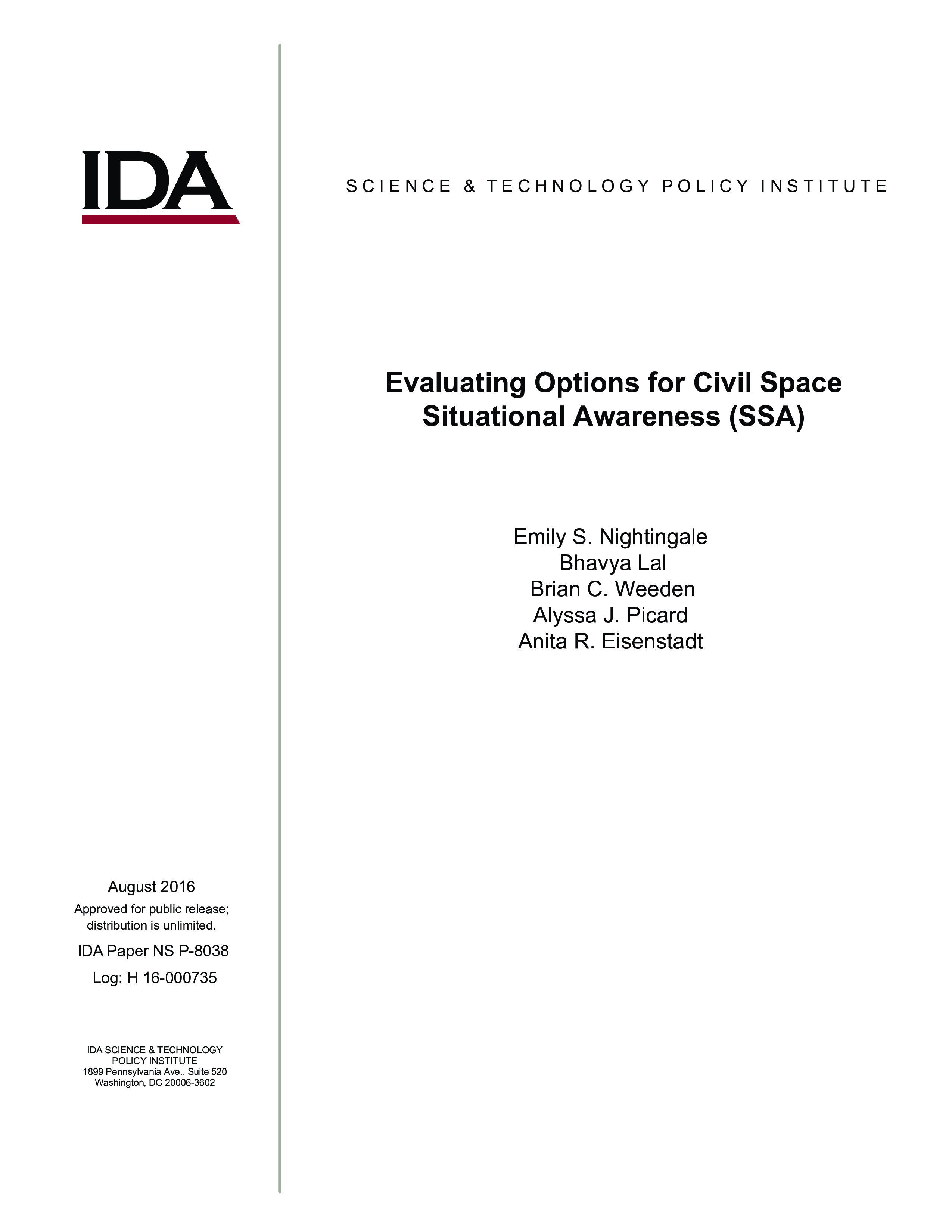In recent years, space has become increasingly congested. Space situational awareness (SSA)—knowing where space objects are, communicating the information to stakeholders, and developing regimes for ensuring safety of space flight—is more crucial now
than it has ever been in the past. Concerned about the possibility of overextending across conflicting missions in a fiscally constrained environment, DOD leadership has publicly noted a desire to move non-national security-related SSA services out of its
purview. In recognition of the need to both improve the quality of SSA services and enable DOD to focus on its core mission, the Federal Aviation Administration (FAA) Office of Commercial Space Transportation (AST) asked the IDA Science and Technology
Policy Institute (STPI) to identify and evaluate potential approaches for providing SSA services for civil and commercial operations in space. STPI identified seven distinct approaches/options to provide SSA services, estimated costs to the extent feasible, and
identified policy implications and strengths and weaknesses of each. STPI also identified 4 approaches to STM.

